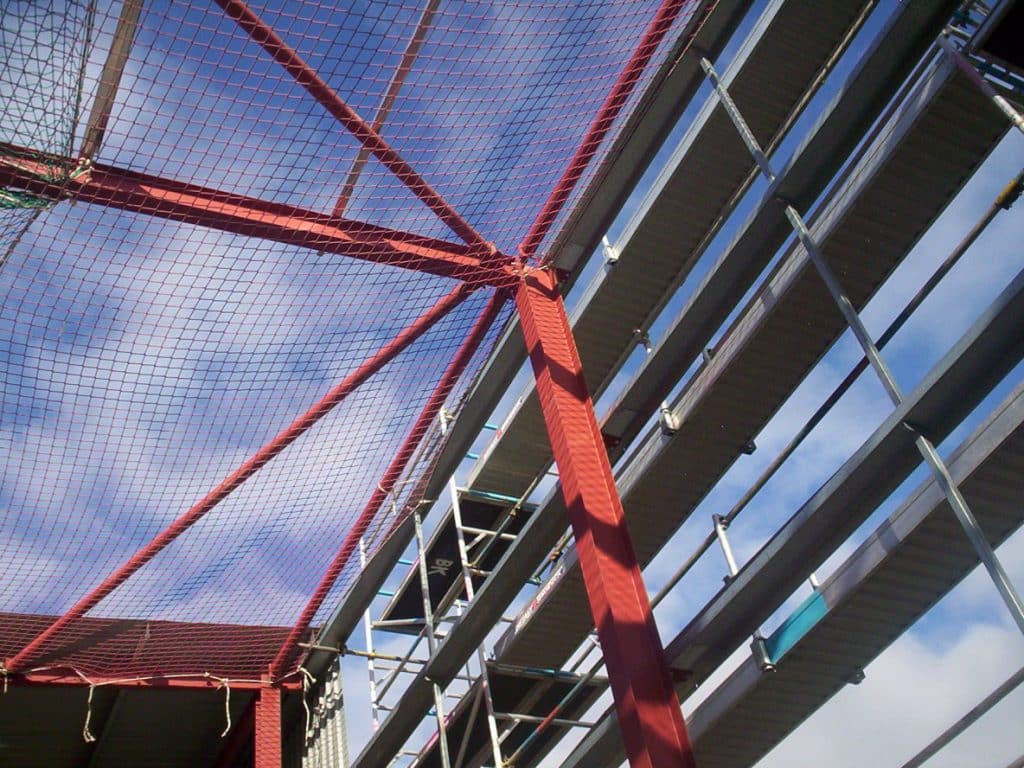A refrigeration company has been fined £27,000 after an incident where a worker suffered gantry fall injuries while carrying out work at height.
GEA Refrigeration UK Ltd was replacing a cooler unit located on a gantry 10m above the warehouse floor at an Iceland depot in Swindon on 1 February 2017.

This required a section of the gantry floor to be removed. A GEA employee fell 2.5 metres through the gap created by this removal and on to a cherry picker, suffering fractured ribs and internal injuries.
An investigation by the Health and Safety Executive (HSE) found the company had failed to properly plan, co-ordinate and supervise the work, including the removal of the gantry floor to ensure the work was carried out in a safe manner to control the risks of falls.
GEA Refrigeration UK Ltd, of Ludgate Hill, London, pleaded guilty to breaching Section 4(1) of the Work at Height Regulations 2005, and was fined £27,000 and ordered to pay £35,000 costs and a victim surcharge of £170 at Bristol Crown Court on 30 September 2022.
“This incident could have been avoided by identifying and implementing effective control measures and safe working practices.
“Falls from height remain one of the most common causes of work-related injury and fatalities and the risks associated with working at height are well known.”
HSE inspector Leo Diez
In his victim personal statement, the injured worker said: “The effect of the accident on my personal and work life has been huge and has had a lasting effect.”
Work at Height Regulations
Falls from height are one of the biggest causes of workplace fatalities and major injuries. Common causes are falls from ladders and through fragile roofs. The purpose of The Work at Height Regulations 2005 is to prevent death and injury caused by a fall from height. If you are an employer or you control work at height (for example facilities managers or building owners who may contract others to work at height) the Regulations apply to you.
Employers and those in control of any work at height activity must make sure work is properly planned, supervised and carried out by competent people. This includes using the right type of equipment for working at height. Low-risk, relatively straightforward tasks will require less effort when it comes to planning. Employers and those in control must first assess the risks by carrying out a risk assessment. Where you employ 5 or more employees, your risk assessment must be in writing.
Employees have general legal duties to take reasonable care of themselves and others who may be affected by their actions, and to co-operate with their employer to enable their health and safety duties and requirements to be complied with.
Work at Height Guidance
Work at height means work in any place where, if there were no precautions in place, a person could fall a distance liable to cause personal injury. For example, you are working at height if you:
- are working on a ladder or a flat roof;
- could fall through a fragile surface;
- could fall into an opening in a floor or a hole in the ground.
Take a sensible approach when considering precautions for work at height. There may be some low-risk situations where common sense tells you no particular precautions are necessary and the law recognises this.
There is a common misconception that ladders, and stepladders are banned, but this is not the case. There are many situations where a ladder is the most suitable equipment for working at height. Before working at height, you must work through these simple steps:
- avoid work at height where it is reasonably practicable to do so;
- where work at height cannot be avoided, prevent falls using either an existing place of work that is already safe or the right type of equipment;
- minimise the distance and consequences of a fall, by using the right type of equipment where the risk cannot be eliminated.
You should:
- do as much work as possible from the ground;
- ensure workers can get safely to and from where they work at height;
- ensure equipment is suitable, stable and strong enough for the job, maintained and checked regularly;
- make sure you don’t overload or overreach when working at height;
- take precautions when working on or near fragile surfaces;
- provide protection from falling objects;
- consider your emergency evacuation and rescue procedures.
If you need health, safety and environmental advice for your business, please contact one of the Ashbrooke team.
